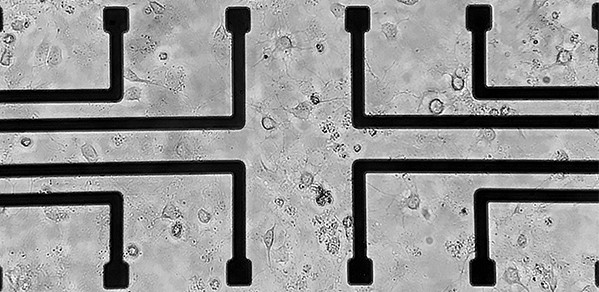
Researchers from the Department’s Bioelectronics Laboratory have won investment from the European Commission to gain a more complete understanding of brain health and disorders – and train the next generation of brain scientists.
The ASTROTECH project will fuel future astrocyte research and train the next generation of brain scientists, equipping them with the skills needed to thrive in the supradisciplinary field of Glial Engineering.
Professor George Malliaras
The collaborative project titled ASTROTECH, funded under Horizon 2020, the EU research and innovation programme, involves industrial partners and nine other universities, as well as the contribution of the private sector in a research and training programme for 15 Early Stage Researchers. The ‘training through research’ will be on state-of-the-art biomaterials interfaces, electronic and photonic devices, combined with a wide spectrum of complementary expertise, to help create and develop the field of Glial Engineering.
The project will provide innovative tools to record, study, and manipulate astrocytes – glial cells that play an important role in brain function – in the healthy and diseased brain. Studies over the past four decades have revealed that astrocytes, which outnumber neurons in the human brain, play a crucial role in numerous functions within the central nervous system. Further still, there are a number of neurological disorders that are invariably associated with astrocyte dysregulation, raising the possibility of causal links in brain ischemia (a condition that occurs when there is an insufficient amount of blood flow to the brain), glioma (brain tumours that start in glial cells), epilepsy or depression.
Although cutting-edge tools have been developed to study neurons (the basic working unit of the brain found within the nervous system), no tool has been specifically developed to study glial cell function. ASTROTECH will fill this gap. It aims to unravel the role of astrocytes in brain function and dysfunction by developing the appropriate technology to study these cells and unveil their implication in disease.
Professor George Malliaras, Prince Philip Professor of Technology, leads an interdisciplinary group of scientists, engineers and clinicians at the Bioelectronics Laboratory, University of Cambridge.
Professor Malliaras said: “There is increasing evidence to indicate that astrocytes play an important role in brain function, but without the appropriate technology to study these cells, scientists cannot unveil their implication in disease. The ASTROTECH project will provide a more complete understanding of brain health and disorders by developing tools for recording and manipulating astrocytes. Crucially, this project – supported by the Innovative Training Networks (ITNs) set up to drive scientific excellence and innovation – will fuel future astrocyte research and train the next generation of brain scientists. These Early Stage Researchers will gain training and complimentary skills in optogenetics, neuroscience, glial physiology and biology and computational methods, as well as knowledge in nanomaterial processing and device fabrication, equipping them with the skills needed to thrive in the supradisciplinary field of Glial Engineering.”

